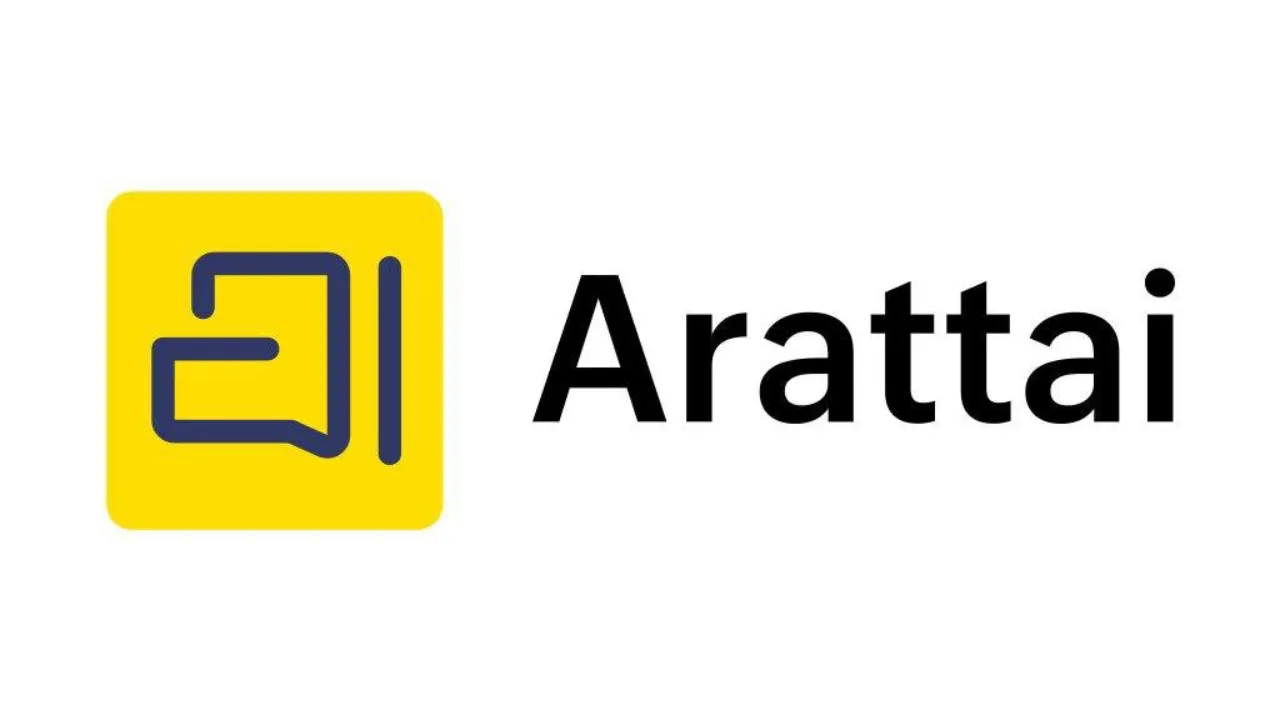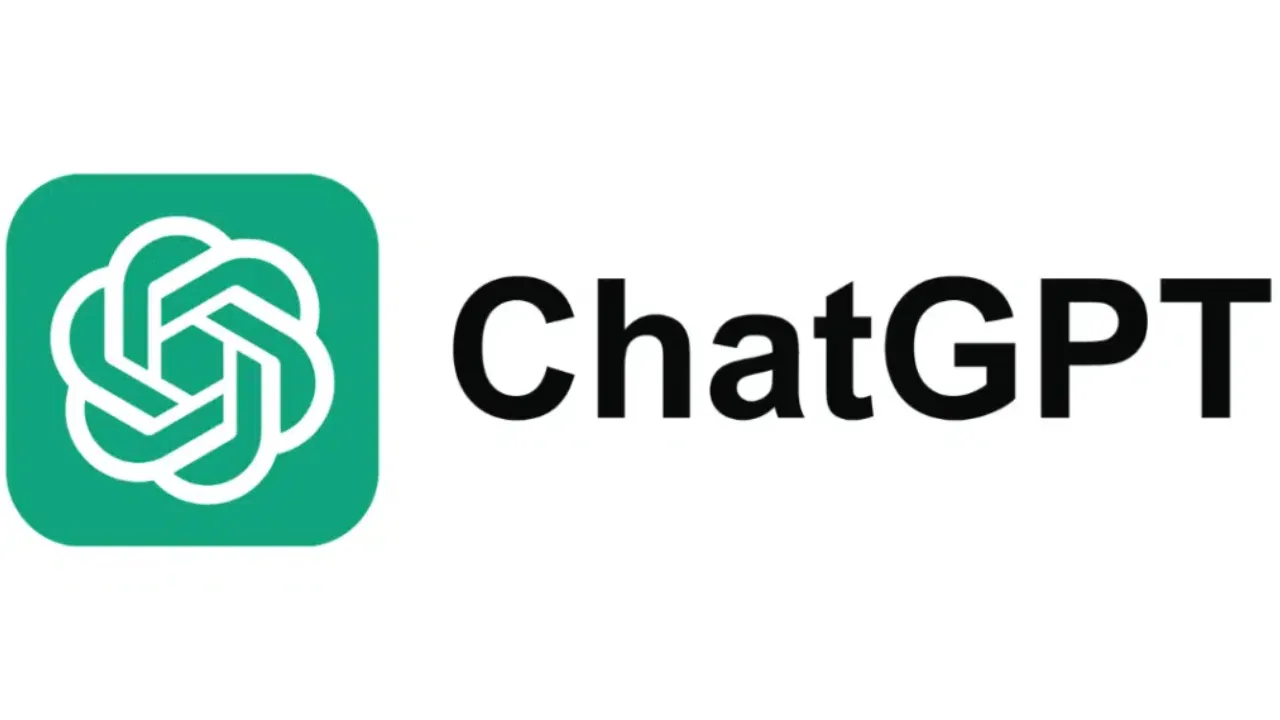Introduction: What is Prompt?
If you’ve been hearing the word “prompt” a lot lately—especially around AI tools like ChatGPT, DALL·E, or Google Gemini—you’re not alone. Prompts are at the heart of how we interact with artificial intelligence. In simple words, a prompt is the instruction or message you give to an AI system to get a response. It can be a question, a sentence, or even a detailed paragraph. The better your prompt, the better the AI’s answer.
So, why is everyone suddenly talking about prompts?
The rise of AI tools has changed the way we search, write, design, code, and even think. These tools don’t work by reading your mind—they rely on the input you give them. That input is your prompt. Whether you’re asking ChatGPT to write a story, using Midjourney to create an image, or asking an AI to write code, it all starts with a simple prompt.
Think of a prompt as a bridge between human thoughts and machine understanding. It translates what you’re thinking into a format the AI can understand and respond to. That’s why knowing how to write a clear, specific prompt has become a new digital skill.
This is where human communication plays a big role. Just like we choose our words carefully when talking to people—depending on who we’re talking to—we also need to be thoughtful with how we “talk” to AI. A vague prompt like “Tell me something” may get a basic reply. But a detailed prompt like “Tell me a motivational quote to start my Monday morning with energy” gives you something much more meaningful.
Prompts are not just commands—they’re conversations. They allow humans to guide AI in the right direction. And as AI becomes part of our daily lives, learning to give the right prompt is becoming as important as knowing how to type or use a smartphone.
In the next sections, we’ll break down what a prompt really is, how it works, and how you can write better prompts to get the most out of AI.
How Prompts Relate to AI and Human Communication
At first glance, the word prompt might sound technical or confusing. But in reality, prompting is just a form of communication—just like asking a friend a question or giving someone instructions. The only difference is that, in this case, you’re talking to a machine.
Let’s break it down.
AI models like ChatGPT, DALL·E, or any modern AI assistant are trained to understand human language. But they don’t actually “think” the way we do. They need a starting point—a message that tells them what you want. That message is your prompt.
In human communication, we naturally adjust how we speak depending on who we’re talking to. You speak differently to a child than to a teacher, right? Similarly, when communicating with AI, your prompt shapes how the AI responds. If your prompt is too short or unclear, the AI might give a general or even irrelevant reply. But if your prompt is specific and thoughtful, the AI can respond in a way that feels surprisingly helpful—even human-like.
For example:
- A vague prompt: “Write something about dogs.”
- A clear prompt: “Write a short, fun blog intro about why dogs are great pets, in a friendly tone.”
The second one gives the AI a much better idea of what you’re looking for. It’s just like giving good directions to a friend—you’re more likely to end up where you want to go.
This is why learning to write better prompts is so valuable today. It helps you communicate with AI more effectively, whether you’re writing a blog, designing an image, summarizing a report, or learning something new.
In a way, prompts are teaching us to be better communicators. They remind us to be clear, direct, and purposeful with our words. And as AI becomes more common in daily life, knowing how to write a strong prompt will be a key skill—not just for techies, but for everyone.
Prompts aren’t just part of using AI—they’re becoming part of how we think, express, and create in the digital world.
What is a Prompt?
So far, we’ve talked about how prompts help us communicate with AI—but what exactly is a prompt?
In simple terms, a prompt is the instruction, message, or question you give to an AI tool so it knows what you want. It’s like pressing a button that tells the machine, “Here’s what I need from you.”
You don’t need to be a programmer or tech expert to use prompts. If you’ve ever typed a question into Google or asked Siri something, you’ve already used a basic form of prompting. The only difference now is that AI tools are getting much smarter, and how you prompt them matters more than ever.
Let’s take an example.
If you open ChatGPT and type:
“Write a birthday wish.”
That’s a prompt. But if you type:
“Write a funny birthday wish for my 30-year-old friend who loves pizza and Marvel movies.”
That’s also a prompt—but it’s a much better one. Why? Because it gives the AI more context, more details, and a clear direction.
Just like we give clear instructions to people when we want a specific result, the same idea applies to AI. The prompt tells the AI:
- What you want
- How you want it
- And sometimes, even why you want it
Depending on the AI tool, prompts can come in many forms:
- A sentence or paragraph (for text-based AIs like ChatGPT)
- A keyword list or phrase (for image generators like DALL·E or Midjourney)
- A question or code snippet (for coding AIs like GitHub Copilot)
The important thing to remember is: the AI only works with what you give it. If the prompt is weak or unclear, the result will probably be the same. But a strong, focused prompt can lead to creative, useful, and even surprising results.
In short, a prompt is your way of telling the AI, “Here’s what I need—now help me with it.” It’s a small input that can unlock big possibilities.
Types of Prompts
Now that we understand what a prompt is, let’s explore the different types of prompts you might come across while using AI tools. Just like there are many ways to talk to people—through questions, instructions, or even pictures—there are also different ways to prompt an AI.
Here are some of the most common types of prompts:
1. Text Prompts
These are the most popular and widely used. A text prompt is simply a sentence, question, or paragraph you type into a tool like ChatGPT, Google Gemini, or Claude. The AI reads your text and responds with a reply.
Examples:
- “Explain climate change in simple words.”
- “Write a romantic poem about long-distance love.”
The better your text prompt, the better the AI’s answer. Being clear and specific really helps.
2. Image Prompts
In tools like DALL·E, Midjourney, or Adobe Firefly, you use prompts to create images. Instead of typing a question, you describe the image you want to generate.
Example:
- “A futuristic city at night with neon lights and flying cars, digital art style.”
Here, the prompt helps the AI understand your vision and turn words into visuals. You don’t need to be an artist—just a good describer.
3. Code Prompts
If you’re working with AI tools like GitHub Copilot, ChatGPT (for coding), or Replit Ghostwriter, you can write prompts that involve code. These could be full coding tasks, error fixes, or even asking the AI to explain a piece of code.
Examples:
- “Write a Python function to check if a number is prime.”
- “Fix the bug in this JavaScript code.”
Even non-developers are now using AI to learn and experiment with coding—thanks to smart code prompts.
4. Voice or Chat Prompts
Some AI assistants like Siri, Google Assistant, or Alexa use voice commands as prompts. When you say something like “Play relaxing music” or “What’s the weather today?”, that voice input is your prompt.
In the end, whether you’re typing, speaking, or describing, your prompt is what guides the AI. It’s your tool for getting the result you want—whether it’s a story, a solution, a picture, or even just a helpful answer.
How Does a Prompt Work in AI?
You now know what a prompt is and the different types—but how does it actually work inside an AI system?
Let’s break it down in a simple way.
When you give a prompt to an AI, you’re basically sending it a message that says, “Here’s what I want—can you help me?” The AI takes that prompt, tries to understand it, and then gives you a response based on what it has learned from huge amounts of data.
AI tools like ChatGPT, for example, are trained on billions of words from books, websites, conversations, and more. When you enter a prompt, the AI compares it to everything it has learned and predicts what kind of reply would make the most sense. It doesn’t think like a human, but it has seen so many examples of human communication that it can guess what comes next in a conversation or answer.
Here’s a simple example:
Prompt:
“Write a motivational quote for someone starting a new job.”
What the AI does:
- Reads the prompt carefully
- Looks for key words: motivational, new job
- Searches through its training to find patterns that match
- Then generates a response like:
“Every expert was once a beginner. Believe in yourself—you’ve got this!”
That’s how fast it works—within seconds, your prompt turns into a meaningful reply.
Why the Prompt Matters So Much
The AI doesn’t know what you want unless you tell it clearly. A small change in the prompt can create a big change in the result. For example:
- “Tell me about dogs.”
→ You’ll get general facts. - “Tell me why Golden Retrievers make great family pets.”
→ You’ll get a much more focused, helpful answer.
So, your prompt acts like a guide—it points the AI in the right direction.
Final Thought
Think of the prompt as your remote control. You press a button (your input), and the AI responds accordingly. The better you use the remote, the better your viewing experience. Similarly, the better your prompt, the more useful, creative, or accurate the AI’s response will be.
Examples of Good vs. Bad Prompts
By now, you’ve probably noticed that the quality of your prompt plays a big role in how helpful the AI’s response will be. Think of a prompt like giving directions—if your instructions are vague, the AI might get confused or give a generic answer. But if your prompt is clear and detailed, the AI can give you exactly what you’re looking for.
Let’s look at some side-by-side examples to see the difference between a bad prompt and a good prompt.
🔴 Bad Prompt:
“Tell me about food.”
➡️ This is too broad. The AI doesn’t know if you want a recipe, history of food, types of cuisine, or something else.
✅ Good Prompt:
“Give me 5 healthy Indian dinner ideas that are quick to cook and high in protein.”
➡️ Now the AI has a clear direction and can give you a specific, useful answer.
🔴 Bad Prompt:
“Write a story.”
➡️ No detail, no tone, no subject—just a very basic command.
✅ Good Prompt:
“Write a short bedtime story for a 5-year-old about a kind elephant who helps his jungle friends.”
➡️ The AI knows the audience, tone, length, and theme. Result: a better story.
🔴 Bad Prompt:
“Explain physics.”
➡️ Too broad, and could be overwhelming for beginners.
✅ Good Prompt:
“Explain the concept of gravity in simple terms for a 10-year-old.”
➡️ Targeted and age-appropriate. The AI can now explain it clearly and simply.
Why It Matters
AI doesn’t guess your full intention—it works only with what your prompt provides. If your instructions are weak, you’ll get weak results. A powerful prompt gives the AI a framework, a goal, and often a tone to follow.
Tips to Improve Any Prompt:
- Add context (who it’s for, what it’s about)
- Be specific (what do you really want?)
- Mention tone or style (formal, funny, simple, etc.)
- Include details (topic, audience, purpose)
The difference between a good and bad prompt can be just a few extra words—but those words can make all the difference in the results you get.
Where Are Prompts Used Today?
You might think prompts are only used by tech experts or AI developers, but that’s no longer true. Today, prompts are used in everyday life—by students, writers, marketers, designers, teachers, and even people who just want to have fun with AI.
Let’s take a look at some common areas where prompts are now being used:
Education & Learning
Students and teachers use prompts to explain topics, generate study materials, and even prepare quizzes or summaries. A student might type:
“Explain photosynthesis in simple words for a 7th-grade science class.”
That prompt helps the AI deliver the content at the right level.
Content Writing & Blogging
Bloggers, social media creators, and marketers use prompts every day to save time and spark ideas. For example:
“Write a catchy Instagram caption for a coffee brand.”
Or:
“Give me a blog outline for the topic ‘Benefits of Yoga’.”
With the right prompt, AI becomes a smart writing assistant.
Art & Design
Graphic designers use image generation tools like DALL·E or Midjourney where prompts guide the AI to create images. A prompt like:
“A sunset over a peaceful mountain range in watercolor style”
can turn into a beautiful digital painting in seconds.
Business & Marketing
Prompts are used for writing emails, product descriptions, slogans, ads, and even customer service replies. For example:
“Write a polite response to a customer asking for a refund.”
It saves time while maintaining professionalism.
Daily Life & Productivity
Even in casual use, people use prompts to plan meals, get advice, or generate to-do lists. Something like:
“Plan a 3-day vegetarian meal plan with easy recipes.”
is a prompt that helps the AI assist you like a personal assistant.
Coding & Tech
Developers use prompts to write or debug code using tools like ChatGPT or GitHub Copilot.
“Create a login form in HTML with password validation.”
That’s a prompt that saves hours of manual work.
In Short:
Prompts are everywhere. Whether you’re learning, creating, solving problems, or just having fun—knowing how to write a good prompt can make your work faster, easier, and more creative.
Why Are Prompts Important?
In today’s world, where artificial intelligence is becoming part of everyday life, understanding prompts is more important than ever. But why exactly are prompts so important? Let’s dive into that.
1. Prompts Help You Get Better Results
Think of a prompt as the instructions you give before asking for help. The clearer and more detailed your prompt, the more useful and accurate the AI’s response will be. If your prompt is vague or confusing, the AI might give an answer that doesn’t quite fit your needs.
For example, if you ask an AI to “Write about health,” you’ll get a very broad answer. But if your prompt says, “Write 5 tips for healthy eating for busy professionals,” the AI knows exactly what to focus on. So, prompts make your interactions with AI more effective.
2. Prompts Save Time and Effort
Instead of spending hours searching for information or creating content from scratch, a well-crafted prompt lets AI do the heavy lifting. This means you can get ideas, drafts, or solutions quickly. Whether you’re a student, a writer, or a business owner, prompts help you work smarter, not harder.
3. Prompts Unlock Creativity
Sometimes, it’s hard to come up with new ideas or fresh perspectives. A good prompt can inspire AI to generate unique content—stories, images, slogans, or even code—that you might not have thought of yourself. This creative boost is one of the biggest advantages of using prompts.
4. Prompts Are a New Digital Skill
Just like typing or using the internet was once a skill everyone needed to learn, writing good prompts is becoming a must-have skill in the digital age. Being able to communicate clearly with AI can improve your learning, productivity, and creativity.
5. Prompts Make AI Accessible
AI might seem complicated, but prompts make it easy for anyone to use. You don’t need to know how the AI works under the hood—just how to write a prompt. This levels the playing field and allows more people to benefit from AI technology.
In short, prompts are the key to unlocking AI’s power. They help you get better answers, save time, boost creativity, and become more effective in your work and life.
Common Mistakes in Prompting
Writing a good prompt isn’t always easy, especially when you’re just starting out with AI. Many people make simple mistakes that can lead to confusing or unhelpful answers. The good news? These mistakes are easy to avoid once you know what they are!
Let’s look at some common mistakes people make when writing prompts:
1. Being Too Vague
One of the biggest errors is giving a prompt that is too general or unclear. For example, if you say, “Tell me about history,” the AI doesn’t know what part of history interests you. History is a huge topic!
Better:
“Tell me about the history of the Roman Empire in simple words.”
2. Not Providing Enough Context
Sometimes, a prompt misses important details that help the AI understand exactly what you want. Without context, the AI might guess wrong.
Example:
“Write an article.”
What kind of article? About what? For whom?
Better:
“Write a 300-word article about climate change for high school students.”
3. Using Complex or Confusing Language
If your prompt is filled with jargon or complicated sentences, the AI might struggle to understand. Clear and simple language works best.
Better:
Instead of “Elucidate the ramifications of quantum computing on cryptographic systems,” try “Explain how quantum computing affects online security in simple terms.”
4. Ignoring Tone or Style
Your prompt should mention if you want the response to be formal, funny, friendly, or casual. Without this, the AI might give you something that doesn’t fit your needs.
Better:
“Write a friendly email inviting colleagues to a team lunch.”
5. Making the Prompt Too Long or Complicated
While details are good, overly long or complicated prompts can confuse the AI. Try to balance between enough detail and simplicity.
Quick Tips to Avoid These Mistakes:
- Be specific but clear.
- Add context (audience, purpose).
- Use simple language.
- Mention the tone or style you want.
- Keep your prompt focused and concise.
By avoiding these common mistakes, your prompts will be stronger, and the AI responses will be more useful and relevant.
Tips for Writing Better Prompts
Writing a good prompt can sometimes feel tricky, but with a few simple tips, you can get much better results from AI tools. Whether you’re new or have tried prompts before, these tips will help you communicate clearly and get exactly what you want.
1. Be Clear and Specific
The most important tip is to be clear about what you want. Instead of a vague prompt like “Tell me about travel,” try something specific like “Give me 5 budget-friendly travel tips for solo travelers.” Clear prompts guide the AI and help avoid confusion.
2. Add Context
Adding context helps the AI understand your needs better. For example, mention who the audience is or what the purpose of the text should be.
Example: “Write a friendly email inviting coworkers to a virtual meeting.”
3. Mention the Tone or Style
If you want the AI to write in a particular tone—funny, formal, casual—say it! This makes the output fit your style and purpose.
Example: “Write a formal apology letter for a late project submission.”
4. Use Examples or Formats
If you want the output in a specific format (like a list, poem, or essay), include that in your prompt. You can also give an example of what you want.
Example: “List 10 benefits of exercise in bullet points.”
5. Keep It Balanced
Give enough detail, but don’t make your prompt too long or complicated. A good prompt is detailed yet simple. Too much information can confuse the AI, while too little may give weak answers.
6. Experiment and Refine
Don’t worry if your first prompt doesn’t get the perfect result. Try tweaking it, adding more details, or changing the wording. AI tools learn from your prompts, so refining helps improve responses.
7. Avoid Ambiguity
Make sure your prompt can’t be misunderstood. If your request is open to different interpretations, clarify it. For example, instead of “Write about Apple,” specify if you mean the fruit or the company.
Final Thought
A good prompt is like a good question: clear, focused, and thoughtful. The better your prompt, the better your AI’s answer. With a little practice, you’ll find prompting is an easy and powerful skill that helps you work faster and smarter.
Conclusion: Mastering the Art of Prompting
Prompts have become the bridge between humans and artificial intelligence, helping us communicate clearly with machines that don’t think or feel like we do. Learning to write a good prompt is more than just typing words—it’s about giving clear instructions that unlock AI’s incredible potential.
Throughout this blog, we’ve seen how a well-crafted prompt can make the difference between a generic answer and a smart, useful response. Whether you want AI to write stories, create images, solve problems, or assist in your daily tasks, mastering the art of prompting is the key.
Why Mastering Prompts Matters
As AI tools become a bigger part of our work, education, and creativity, the ability to write good prompts will be a valuable skill for everyone—not just tech experts. It saves time, boosts creativity, and helps you get exactly what you need.
Keep Practicing and Experimenting
No one gets perfect prompts right away. The best way to improve is by practicing. Try different prompts, see what works, and don’t be afraid to tweak your instructions. Over time, you’ll learn how to guide AI more effectively and confidently.
A Skill for the Future
In the digital age, clear communication with AI is like learning a new language. The better you get at prompting, the more you’ll benefit from the technology around you. This skill can make your life easier, your work faster, and your ideas bigger.
So next time you sit down to use AI, remember: your prompt is your most powerful tool. Use it thoughtfully, be clear, and watch the AI surprise you with what it can do.
Happy prompting!
Frequently Asked Questions (FAQs) About Prompts
1. What is a prompt in AI?
A prompt is the instruction or question you give to an AI system to get a response or perform a task.
2. Why is writing a good prompt important?
A good prompt helps the AI understand your request clearly, resulting in better and more accurate answers.
3. Can anyone write a prompt, or do I need special skills?
Anyone can write a prompt! You don’t need to be a tech expert—just be clear and specific in what you ask.
4. What are some common types of prompts?
Common types include text prompts (questions or instructions), image prompts (descriptions for image creation), and code prompts (for programming help).
5. How detailed should a prompt be?
A prompt should be detailed enough to give clear instructions but simple enough to avoid confusion.
6. Can I use prompts for tasks other than writing?
Yes! Prompts can be used for generating images, coding, answering questions, creating emails, and much more.
7. What happens if my prompt is too vague?
If a prompt is vague, the AI might give a generic or unrelated answer that may not meet your needs.
8. How can I improve my prompts?
Be specific, add context, mention the tone or style, and keep your prompt clear and concise.
9. Are prompts only for AI tools like ChatGPT?
No, prompts are used in many AI tools including text generators, image creators, voice assistants, and coding helpers.
10. Is prompt writing a useful skill for the future?
Absolutely! Knowing how to write good prompts will help you use AI effectively in work, learning, and creativity.













